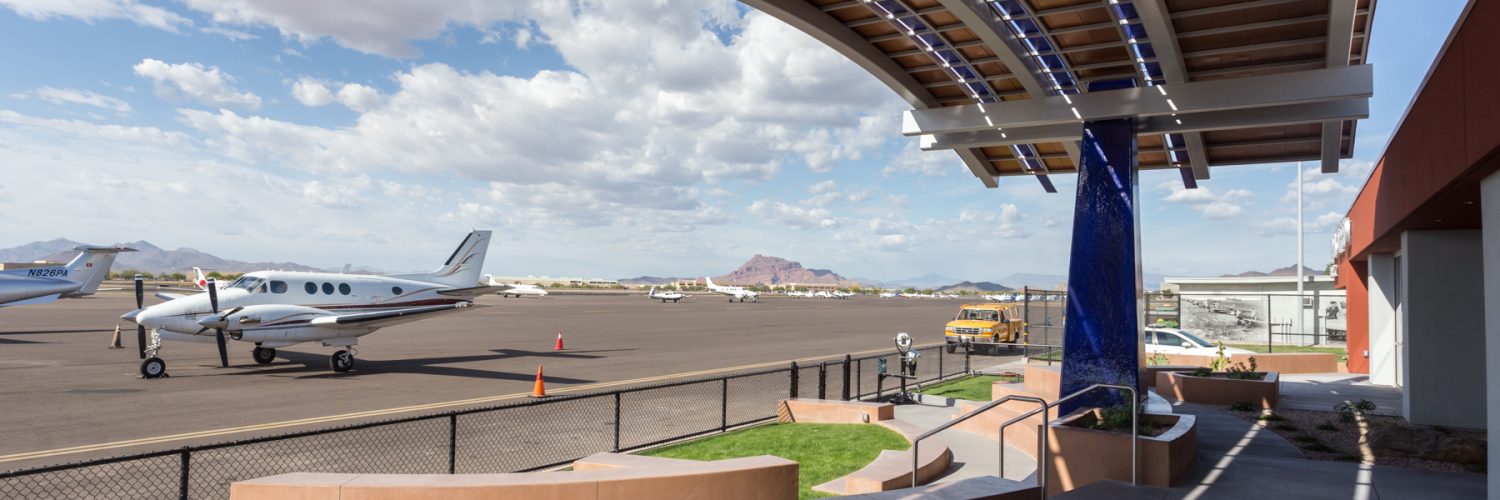Phoenix Sky Harbor is often recognized as one of the busiest commercial airports in the nation and world, but Arizona is home to another major aviation hub: the City of Mesa’s Falcon Field.
With over 300,000 departures and arrivals annually, Falcon Field is the fifth-busiest general aviation airport in the nation. In other words, it is one of the most popular air harbors for private and recreational flying.
This traffic directly translates into billions of dollars in economic impact. According to a report published by Falcon Field, the airport generates roughly $6.8 billion annually. This includes approximately $811 million in direct employee benefits, such as salaries for companies based at the airport and suppliers of these companies.
“We’re starting to see an increase in our corporate jet traffic,” Falcon Field economic development project manager Lynn Spencer said. “We historically were general aviation with a lot of recreation fliers. Of course, we have CAE [Oxford Aviation Academy] which is our largest business operation — it’s our commercial flight training school. At one point, they were over 50 percent of our operation, so it’s a lot of flight training. We are also very much a helicopter training airport. Obviously, we don’t have commercial, but it’s a very big mix between the business corporate traveler to the training.”
The airport by itself supplies 1,486 jobs, which directly translates to an economic output of almost $435 million. Looking forward, Falcon Field plans on expanding and increasing its economic impact. In 2017, the airport housed 719 planes. In the near future, that number is expected to eclipse 1,000.
One of their largest development projects is a 340,000 square-foot hangar expansion, which will allow the airport to more flexibly customize hangars to various customers’ requests. These hangars include fiber, cables, swamp coolers, and fans that the original infrastructure didn’t include. In addition, their expansion plan includes a 5,600 square-foot corporate hangar and an additional 8,300 square feet currently awaiting approval by city officials.
“We had [the investor and development teams] talk with the Arizona Commerce Authority and the Greater Phoenix Economic Council,” Spencer said. “We talked about our national and statewide aviation and aerospace attraction efforts, and from that and the conversations they had with various corporate jet-owners as well as businesses, manufacturing businesses, and other support businesses, they identified a need for an additional 50,000 square feet of hangars.”
Falcon Field communications specialist Dee Ann Thomas emphasizes that notwithstanding their current expansion efforts, Falcon Field is still open for business. In fact, the airport still has 40 acres available for development. They are able to tailor hangars for leisurely travel, business fliers, and more. As Arizona continues to become an increasingly popular tourism destination, this could be a solid option for many travelers.
“Another bit of expansion we’re seeing is the desire of people trying to build their own kinds of hangars,” Thomas said.
“We’re starting to see some recreational travel from people that own their own planes coming in primarily during the winter time — you see a lot of people that come in for spring training and the winter season, so you do see that increase in traffic,” Spencer said.
Photo courtesy of City of Mesa
















So great to see all these things going on at Falcon Fields